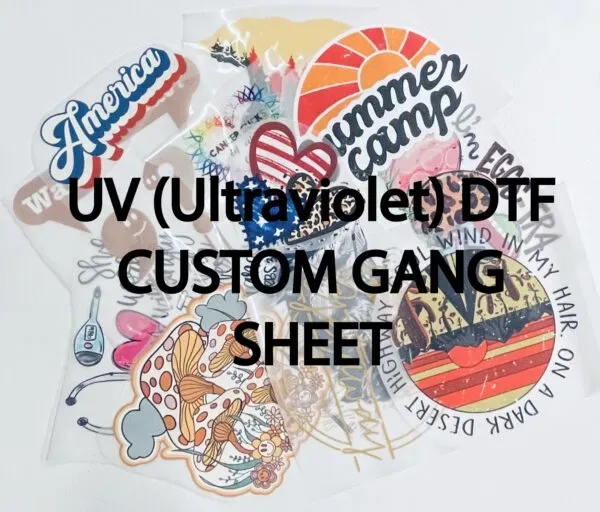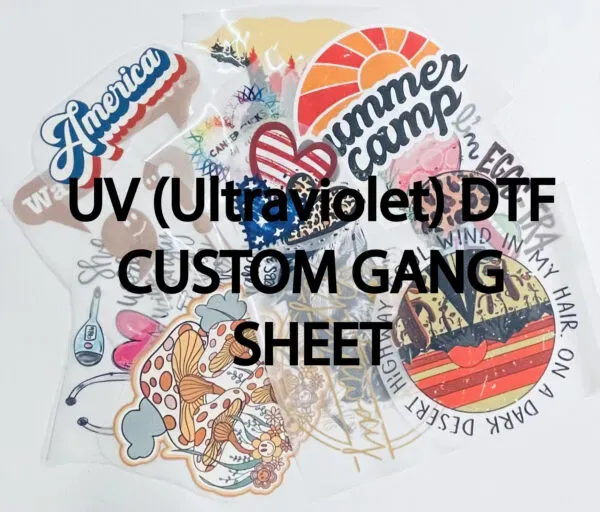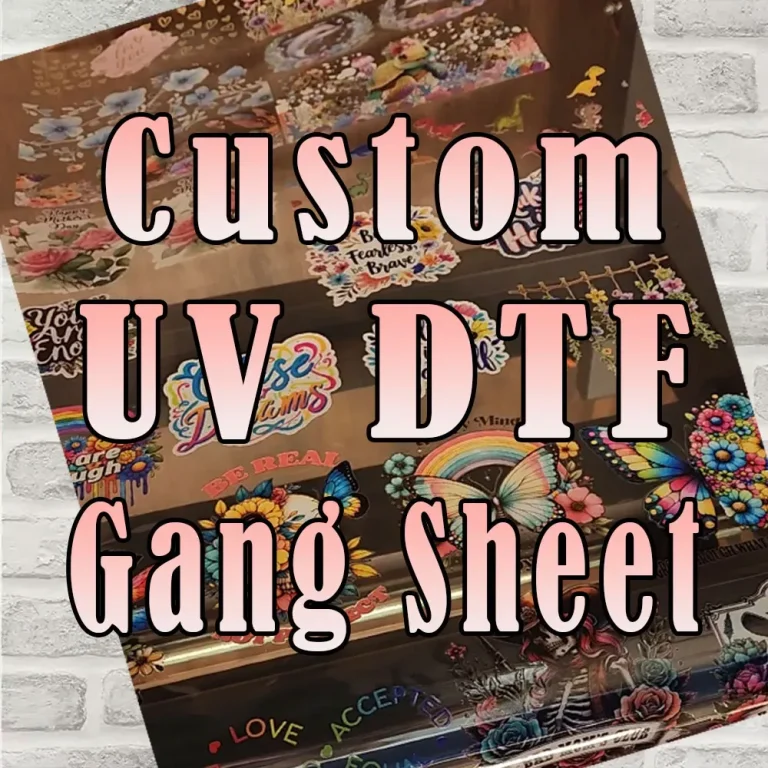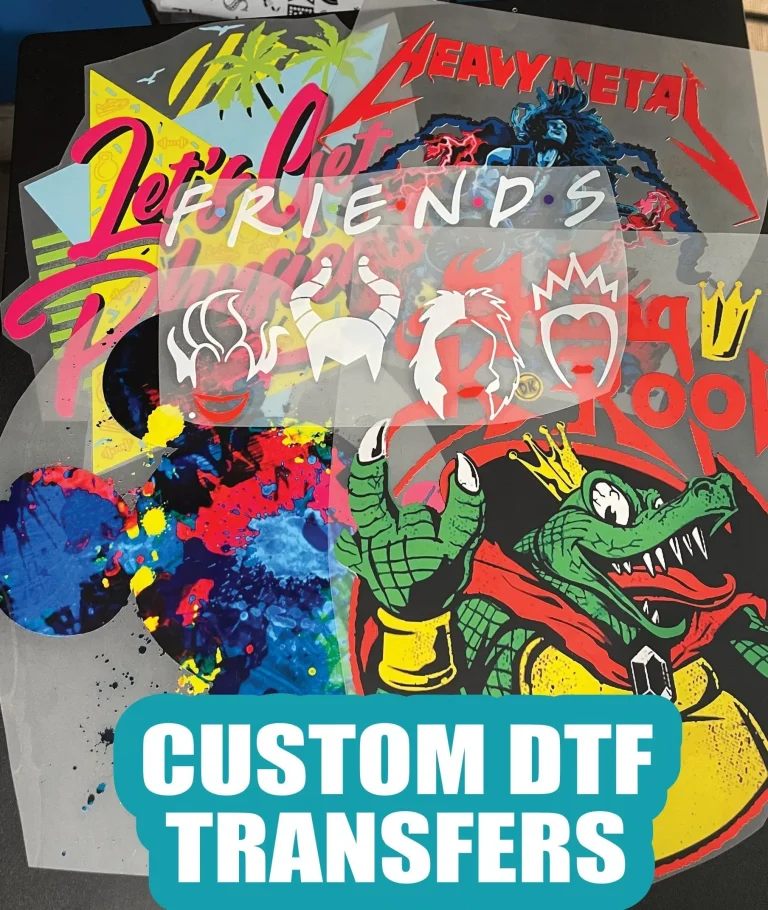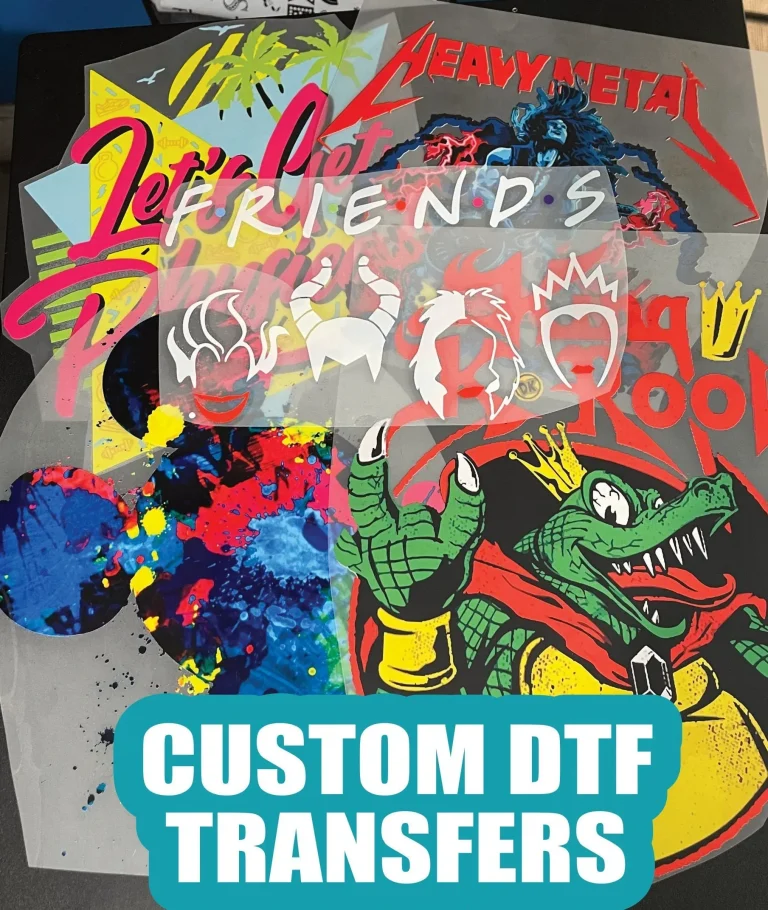DTF Transfer Paper: Choose the Right One for Your Projects
If you’re looking to elevate your fabric printing projects, understanding **DTF transfer paper** is essential. This innovative transfer medium has quickly become a favorite among creators, offering vibrant colors and stunning details in designs when applied to various textiles. Knowing how to choose the best DTF transfer paper can make all the difference in your results, ensuring that your creations stand out. In this guide, we will explore DTF printing tips, user reviews, and best practices to help you maximize the potential of your projects. Whether you’re a seasoned pro or just starting out, mastering this technique will undoubtedly enhance your creative journey.
In the world of fabric printing, alternatives like Direct-to-Film (DTF) papers have gained significant attention for their ability to transfer intricate artworks seamlessly onto fabric surfaces. These special transfer sheets offer a unique solution for crafters and businesses alike, allowing users to produce professional-quality prints with minimal effort. As many skillful designers seek guidance on how to utilize DTF technology effectively, understanding key features such as paper weight, adhesive quality, and finish options becomes crucial. By tapping into various DTF transfer paper options and learning from community feedback, you can optimize your printing process and achieve impressive outcomes.
Understanding the Basics of DTF Transfer Paper
DTF transfer paper, or Direct-to-Film transfer paper, has gained popularity as a versatile medium for creating custom prints on fabrics. This technology allows designers to transfer high-quality images onto a variety of textiles, leveraging the rich colors and intricate detailing characteristic of modern printing methods. Unlike traditional iron-on transfers, which often lead to cracked designs or peeling, DTF transfer paper ensures a smoother finish that adheres well to the fabric, making it an ideal choice for both hobbyists and professional printers.
The essence of DTF printing lies in its ability to deliver precise and vibrant designs, pushing creative boundaries. This paper type provides a distinct advantage because it absorbs ink effectively and provides a robust adhesive layer, ensuring long-lasting quality. As consumers explore the world of custom fabric printing, understanding how DTF transfer paper functions, the right applications, and its advantages over other methods are crucial to mastering the printing process.
Key Factors in Selecting the Best DTF Transfer Paper
When searching for the best DTF transfer paper, several key factors come into play. Firstly, the compatibility with your printing equipment is critical; not all papers can handle the same printer types, such as inkjet, eco-solvent, or pigment printers. Ensuring the transfer paper matches your printer specifications is vital to avoid clogs and achieve the best print quality. Additionally, the weight and thickness of the paper directly influence the durability and clarity of the final product. Heavier papers often yield richer colors but can be more challenging to manage, while lighter options might be more suited for quick, flexible projects.
Another essential factor is the quality of the adhesive used in the DTF transfer paper. Strong adhesive ensures that your designs adhere effectively and help maintain their vibrance after washing. Beware of lower-quality papers that may lead to unsatisfactory results, including uneven transfers or premature wear. Ultimately, taking the time to research and evaluate different brands based on these criteria can help you find the best DTF transfer paper suitable for your specific needs.
DTF Printing Tips for Achieving Optimal Results
Using DTF transfer paper can significantly elevate your printing projects, but understanding key printing tips can further enhance the results. For starters, make sure to maintain the correct temperature and pressure during the transfer process. Each type of DTF paper might have specific requirements, so following manufacturer guidelines is crucial. Running test prints can help you determine the ideal settings for your equipment, preventing costly mistakes in larger projects.
Additionally, experimenting with fabrics is essential for optimizing your prints. Different textiles interact with DTF transfer paper differently; for instance, cotton fabrics may yield more vibrant results compared to synthetics. Documenting your printing settings and results can also help refine your processes over time, allowing you to replicate successful outcomes. By sharing your findings with the printing community, you can contribute valuable insights into best practices for those also using DTF transfer paper.
Evaluating DTF Transfer Paper Through Reviews
Researching DTF transfer paper reviews is an invaluable resource for anyone looking to make an informed purchase. User testimonials can provide practical insights about the performance, durability, and ease of use of different brands. By exploring various platforms such as social media groups, printing forums, and dedicated product review sites, potential buyers can gather a wealth of information about which DTF transfer paper has garnered positive feedback and why.
Evaluating reviews allows you to identify common issues or praises linked to specific products. Users often discuss factors such as print quality, adhesive performance, and overall satisfaction with their projects, assisting you in finding the best options available. Furthermore, real-world experiences will help you understand how to adapt the usage of DTF transfer paper to suit your personal preferences and project needs.
The Importance of Testing Trial Packs of DTF Transfer Paper
Before committing to a specific brand of DTF transfer paper, utilizing trial packs can be an effective way to test different options without a significant financial investment. These sample packs often include multiple types of paper, allowing you to assess compatibility with your printer, experiment with various weights, and gauge the results across different fabrics. By testing various brands, you’ll learn which transfer paper aligns best with your printing approach and desired outcomes.
Moreover, trial packs can reveal the subtle differences in printing results, such as color vibrancy and adhesion quality. As you try different DTF papers, you may discover unexpected advantages or limitations that can significantly impact your projects. Engaging in this hands-on exploration is crucial to advancing your skills as a printer and ensuring that you make well-informed choices in your future purchases.
Balancing Cost and Quality in DTF Transfer Paper Choices
As with most crafting supplies, the cost of DTF transfer paper can vary widely, and while it may be tempting to opt for the cheapest option available, prioritizing quality is essential. Low-cost DTF transfer paper might save money initially but can lead to disappointing results that necessitate reprinting and waste. Investing in reputable brands that provide high-quality transfer paper not only ensures better printing experiences but also enhances the professionalism of your finished products.
Finding a balance between quality and cost is vital for long-term project success. While there are affordable options on the market, evaluating the performance of DTF transfer papers through reviews and real user experiences can solidify your choices. Consider your specific project needs and the potential consequences of using low-quality paper, as the right investment will pay off in producing outstanding designs that withstand the test of time.
Frequently Asked Questions
What is the best DTF transfer paper for vibrant colors?
The best DTF transfer paper for vibrant colors is usually a thicker, high-quality paper designed to hold ink well and ensure sharper prints. Look for papers specifically formulated for your printer type, as these tend to produce the best color saturation and detail.
How to use DTF transfer paper for beginners?
To use DTF transfer paper, begin by printing your design onto the paper with your compatible printer. Next, you will need to apply adhesive powder to the printed design and cure it in a heat press. Finally, position the transfer on your fabric, apply heat and pressure, then peel off the backing. Be sure to follow the manufacturer’s instructions for optimal results.
What are some helpful DTF printing tips for better results?
Some helpful DTF printing tips include ensuring your printer settings match the DTF transfer paper type, using high-resolution images, and testing different pressures and temperatures on your heat press. This experimentation can lead to improved transfer quality and consistency.
Are there any DTF transfer paper reviews available online?
Yes, there are numerous DTF transfer paper reviews available online. Look for independent blogs, forums, and customer testimonials to gather insights on various brands and types. These reviews can guide you in selecting the best DTF transfer paper for your specific needs.
How does adhesive quality impact DTF transfer paper performance?
Adhesive quality is crucial for DTF transfer paper performance because it affects how well the design adheres to the fabric. A strong adhesive ensures a smooth transfer process, while poor adhesive can result in peeling or uneven designs, compromising the quality of your finished product.
What factors should I consider when choosing DTF transfer paper?
When choosing DTF transfer paper, consider factors like material compatibility with your printer, paper weight (for durability), adhesive quality, finish options (glossy vs. matte), print resolution capabilities, and user reviews. These will ensure you select the best DTF transfer paper for your projects.
| Key Considerations | Description |
|---|---|
| 1. Material Compatibility | Ensure the transfer paper is compatible with your printer and ink type. |
| 2. Paper Weight and Thickness | Choose between heavier papers for durability or lighter papers for flexibility. |
| 3. Adhesive Quality | Strong adhesive is necessary for successful transfers. |
| 4. Finish Options | Select glossy for vibrant colors or matte for a subtle look. |
| 5. Print Resolution | Opt for papers that support high-resolution printing for clarity. |
| 6. Trial Packs | Testing sample packs can help identify the best option. |
| 7. User Recommendations | Seek reviews and community feedback for informed choices. |
| 8. Cost | Balance your budget with quality to avoid subpar results. |
Summary
DTF transfer paper is essential for achieving high-quality fabric printing results. By considering critical factors such as material compatibility, adhesive quality, and finish options, you can ensure that the paper you choose will enhance the vividness and durability of your designs. A well-selected DTF transfer paper can elevate your projects, allowing your creativity to shine through. Whether you are a hobbyist or a professional, understanding these key aspects will lead to successful printing outcomes and an enjoyable crafting experience.


